Non-Compete Agreement Templates
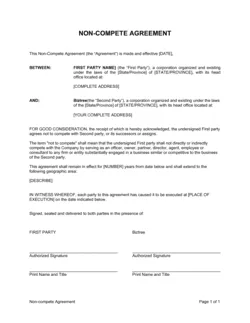
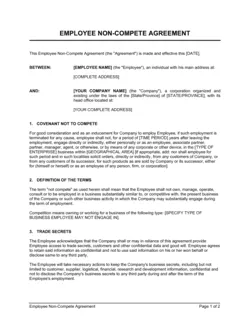
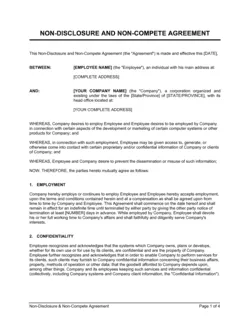
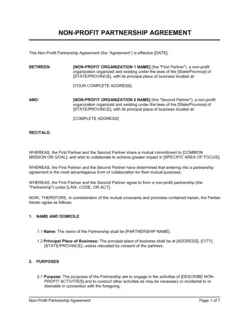
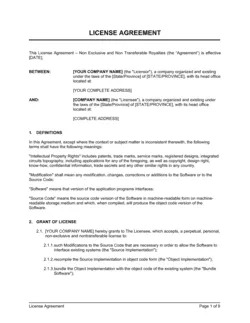
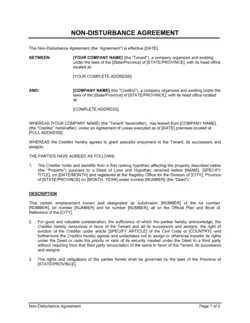
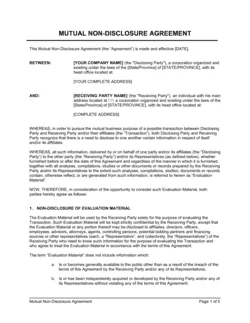
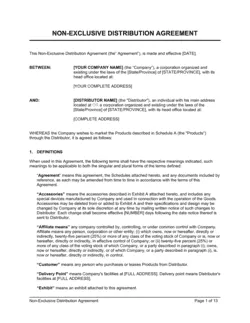
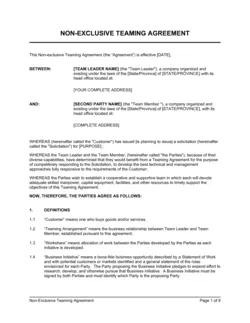
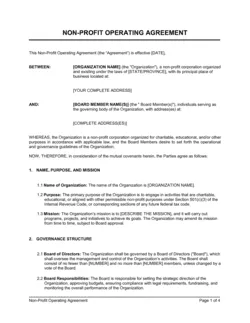
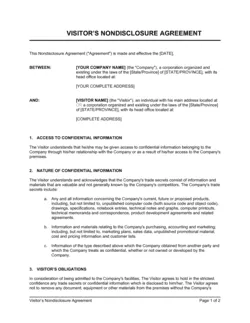
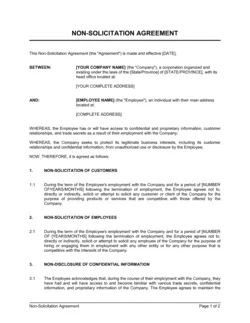
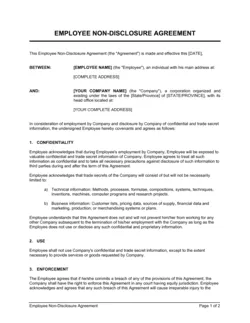
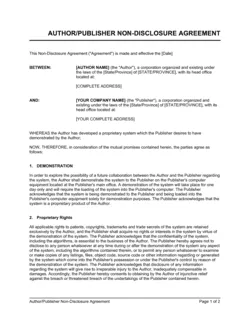
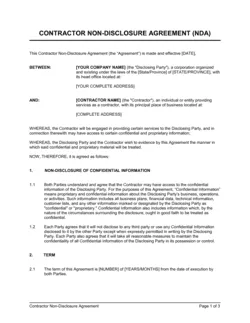
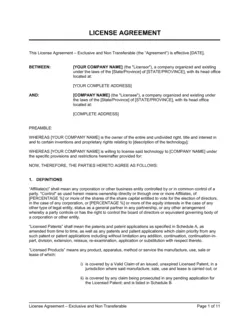
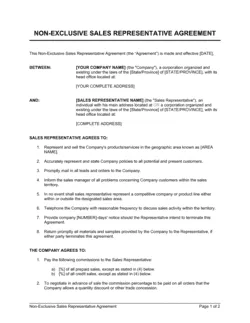
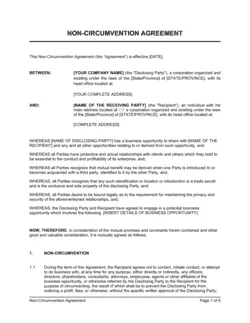
Non-Compete Agreements: A Comprehensive Guide
In the highly competitive world of business, it is important to make sure that every angle of your business is protected against losing your intellectual property when you lose your human resources - employees.
A general non-compete agreement template is commonplace in most industries, and in the jurisdictions where they are legally binding, these agreements form part of most employment contracts for specialized positions and senior executives. Some industries use an employee non-compete agreement template and employee non-disclosure agreement template as a standard part of their employment contracts for all staff members.
An employee non-compete agreement template prevents the employee from working with your competitors or even in the same industry for a period of time and prohibits the use of any company (Yours) specific IP being used in the new place of employment. You may think that these clauses and agreements are so commonplace that you could use any terminology or hastily drawn up agreements in your business, but you would be dead wrong. Your non-compete agreements and non-compete clauses must comply with several legal statutes as well as industry regulations that might be in place in your jurisdiction. There are a few key aspects of a non-compete agreement that you must clearly specify if you might be liable for severe legal action if the agreement comes into question.
Why Use Non-Compete Agreements for Your Business
Regardless of your industry, or the size of your business, you could benefit from using a non-disclosure and non-compete agreement template in your organization. The way you implement them could significantly protect your business against exploitation by employees and contractors after they leave your organization. Having a non-compete agreement drafted by lawyers or industry specialists could cost you a significant amount of money and you would have to further pay for any updates into the future. Working off a template will save you hundreds of dollars. The various non-compete clauses and agreement templates in Business-in-a-Box have all been designed and created by legal professionals and industry experts, so you can be certain of their quality and legitimacy.
Your industry might be highly traded and like most companies, you would like to protect your business against information leakage from situations like industrial espionage to employees leaving your organization. You would most likely use non-compete agreements for your executive and key personnel so that these key people in your organization do not leave your business and take the experience and knowledge to your competitors. You might also want to prevent salespeople from jumping ship to your competition and taking with them the vital sales knowledge of your products or services to the other side.
What Does a Legal Non-Compete Agreement Look Like?
Non-compete agreement templates are designed to be industry generic but legally specific so that they will protect your business (Protected Party) and the employee (Noncompeting Party) equally in the event of a dispute. The clauses and agreements are created to include the following vital information:
Name and Address Details - Your company name and registered address must be clearly stated on the agreement and the name and legal address of the person signing the agreement. These details will facilitate the limitation of the liability of the agreement, like specifying the jurisdiction and area based on your location and the person signing the non-compete agreement.
Start Date and Duration - A vital detail that is often overlooked by novices, the start date of the agreement, and the duration must be clearly specified, or the agreement will not be enforceable. You should take note that there are some limitations on the duration of non-compete agreements in certain jurisdictions and states (USA) and you should keep these in mind when you complete this section of your template. Give this section careful consideration so that you do not overextend the time limitation and render the non-compete agreement invalid.
Non-Compete Reasoning - Using the function or position of the non-competing party as the reason for the non-compete agreement is not enough. You must specify why the non-compete agreement is in place with regards to the party’s exposure to vital company information such as intellectual property or production secrets. Although you don’t have the detail the information referenced to, you do have to clearly state what the nature of this information is so that you can reference these aspects in court, if it comes to that. This section of your non-compete agreement template will also help you clarify why the non-compete agreement process is in place within the mind of your employee or contractor.
The Jurisdiction or Geographic Limitation - Depending on your location you might have to specify the region or jurisdiction where the non-compete agreement will have an effect so that it is not rendered illegal based on location generalization. In some states (USA) the non-compete agreement will only be applicable within state borders, where other regions might have a larger applicable area. The non-compete agreement will also be invalidated if your geographic area is too large and deemed to have a negative effect on the non-competing party’s ability to earn a living. As with the duration of the agreement, you must carefully consider the geographical limitations of your non-compete agreement so that you do not invalidate the agreement.
Signing Consideration/Compensation - Your company gains a certain amount of protection from the non-compete agreement and as such you need to offer the non-competing party some consideration or compensation for signing the agreement. This could take the form of monetary or share options in your business, basically, you can define the consideration according to the level of the non-compete agreement that is being signed. This could also be used as a prohibitive measure against leaving your company but be careful as the implementation could be detrimental to your business if taken advantage of.
Signatory Names - Any non-compete agreement must have the signing parties' full names and designations listed so validate the agreement based on the level of employee exposure or contractor. Be sure to have the witnesses also sign the agreement so that you maintain the legal integrity of the agreement.
Although these are the core content details of any non-compete agreement template, you will see that there are over 60 different non-compete agreements and other relevant templates in the section that could be used in your business. These templates are all the highest standards and formatted correctly so that you could apply them in your business within minutes of downloading them.
Important aspects to remember when creating Non-Compete Agreements
Non-compete agreements are legally binding documents so you must keep certain aspects in mind when creating these documents for your business. These features of your non-compete agreement will help with securing your business and employees from disclosure in the event of legal action. These aspects are:
Key Personnel - In many cases where a general non-compete agreement is used for all personnel you will find that the level of exposure of your key personnel to your company intelligence will warrant a more comprehensive non-compete agreement or clauses within their contracts. Make sure you protect your company according to the level of interaction and exposure with specific non-compete agreements for different personnel.
Region or Industry Specific Laws - Depending on your location you might find that non-compete agreements might not be enforceable according to the local laws and regulations. The industry that you operate in could also have specific regulations that might preclude or specify a non-compete agreement for your company. For example, the insurance industry utilizes many formulas or actuarial calculations that might be unique to your business, these aspects should be clearly addressed in your non-compete agreement or be detailed in non-compete clauses within your employment contracts.
Excessive Restrictiveness - Your non-compete agreement could be deemed invalid if you are too restrictive in how you enforce the non-compete limitations on the employee. So be careful not to make your non-compete agreement too restrictive so that your company does not fall, victim, too legal action. Make sure you communicate what you are protecting and how you limit the non-competing party after leaving your employ so that your non-compete agreement template does not become unenforceable in the eye of the law in your area.
Transparency - When implementing non-compete agreements in your business, DON’T keep them secret. Communicate the reasoning and effect to your employees so that they fully understand the legality and protection that it provides to the company and how they will be affected if they decide to leave your organization. You might consider regular information sessions to remind your employees about the terms of the non-compete agreements they have signed and what it means for the sustainability of the business. It is also crucial to inform your competitors of your non-compete agreements or clauses so that they don’t transgress these agreements if your employees take up employment with them.
Keep Employees Informed - During the exit interview with your personnel remind them of the non-compete agreement and how it will affect them in the future. You should be clear about the clauses and your intention to enforce them if necessary.
Benefits of Non-Compete Agreements
Your business will gain certain benefits from implementing a non-compete agreement in your organization. These benefits will gain momentum over time as you grow and further develop your business strengths.
Secure your Intellectual Property - With a properly implemented non-compete agreement, your business will protect your trade secrets and intellectual property. Over time your business will gain market share and competitiveness due to keeping your IP within the confines of your organization. In a competitive marketplace, this edge over your rivals will systematically increase your revenue streams and profitability.
Less Staff Turnover - Most people enjoy working for a stable and profitable company, and with non-compete agreements, you will overtime attract employees that are more suited to staying with a company for longer periods of time. This will reduce your staff turnover and save you recruitment costs in the future. This will highlight your company as a more stable place of employment, which in turn will enrich your market reputation as a preferred employer.
Training of Staff ROI - Many companies spend thousands training their staff and these costs can only recover if the employees stay with the business. So with a non-compete agreement policy in your business, you will be able to mobilize more training initiatives within your business to capitalize on the longer staying employees. Your business will be able to train better staff and benefit from their expertise in the field.
Non-compete agreements have had a troubled reputation in the past, however, with the proper templates and implementation, the historical understanding of these powerful implements has been replaced with knowledge and legal understanding.
When you sign up to Business-in-a-Box, you obtain access to over 2000 business templates that cover every aspect of your business communication and documentation, regardless of industry or location. With these powerful template-driven non-compete agreements and clause documents, you can safeguard your trade secrets and business in the legal and professional way.


